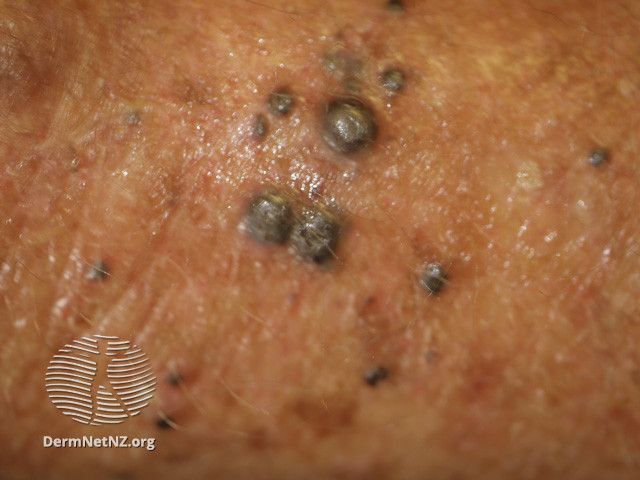- Acne
- Actinic Keratosis
- Aesthetics
- Alopecia
- Atopic Dermatitis
- Buy-and-Bill
- COVID-19
- Case-Based Roundtable
- Chronic Hand Eczema
- Chronic Spontaneous Urticaria
- Drug Watch
- Eczema
- General Dermatology
- Hidradenitis Suppurativa
- Melasma
- NP and PA
- Pediatric Dermatology
- Pigmentary Disorders
- Practice Management
- Precision Medicine and Biologics
- Prurigo Nodularis
- Psoriasis
- Psoriatic Arthritis
- Rare Disease
- Rosacea
- Skin Cancer
- Vitiligo
- Wound Care
News
Article
Bemcentinib Plus SOC Is Well Tolerated, But Does Not Improve Efficacy in Metastatic Melanoma
Author(s):
The addition of bemcentinib to the standard-of-care therapies of pembrolizumab or dabrafenib plus trametinib was well tolerated in patients with metastatic melanoma; however, it did not lead to improvements in overall response rate, progression-free survival, or overall survival vs SOC alone.
The addition of bemcentinib (BGB324) to the standard-of-care (SOC) therapies of pembrolizumab (Keytruda) or dabrafenib (Tafinlar) plus trametinib (Mekinist) was well tolerated in patients with metastatic melanoma; however, it did not lead to improvements in overall response rate (ORR), progression-free survival (PFS), or overall survival (OS) vs SOC alone, according to data from the phase 1b/2 BGBIL006 trial (NCT02872259).
Findings presented at the 2023 ESMO Congress also showed that preplanned analyses of baseline biomarkers did not identify subgroups of patients who achieved an increased response to combinations featuring bemcentinib compared with SOC alone.
Regarding safety, any-grade adverse effects (AEs) occurred in 98% of patients treated with bemcentinib-based combinations (n = 64) vs 100% of those given SOC alone (n = 27). The rates of grade 3 or higher AEs were 35% and 22%, respectively. Notably, 24% (n = 18/73) of grade 3 or higher AEs were deemed to be possibly related to bemcentinib. The most common any-grade AEs possibly related to bemcentinib were rash, diarrhea, fatigue, and increased transaminases.
“No significant differences in responses or survival [were observed] in the efficacy population or in the biomarker-defined subgroups between standard treatments and the combinations with bemcentinib,” lead study author Oddbjørn Straume, MD, PhD, of the Department of Oncology and Medical Physics at Haukeland Universitetssykehus in Bergen, Norway, said in a presentation of the data.
The AXL receptor is expressed in stromal cells, myeloid cells, and tumor cells, and it plays a role in development, epithelial-mesenchymal transition, and immune modulation. Bemcentinib is a first-in-class, oral, highly selective AXL inhibitor.
The phase 1b/2 study was designed to evaluate bemcentinib in combination with SOC therapies. BGBIL006 enrolled patients with previously untreated, stage IIIC to IV, unresectable melanoma who had an ECOG performance status of 0 to 2 and evaluable disease per RECIST v1.1 criteria.
The part 1, dose-escalation portion of the study evaluated 100 mg of bemcentinib in combination with dabrafenib/trametinib in patients with BRAF-mutated disease who had a high tumor load. Part 2 randomly assigned:
- patients with BRAF-mutated disease and a low tumor load in a 2:1 fashion to pembrolizumab with or without 200 mg of bemcentinib,
- patients with BRAF-mutated disease and a high tumor load in a 2:1 fashion to dabrafenib/trametinib with or without 200 mg of bemcentinib,
- and patients with BRAF wild-type disease in a 2:1 fashion to pembrolizumab with or without 200 mg of bemcentinib.
In part 3, after disease progression or first-line toxicity, patients with BRAF-mutated disease and low tumor load treated with pembrolizumab plus bemcentinib in part 2 were then given dabrafenib/trametinib plus 200 mg of bemcentinib and those treated with pembrolizumab monotherapy received dabrafenib/trametinib alone. Those administered dabrafenib/trametinib plus bemcentinib received pembrolizumab plus bemcentinib; and those treated with dabrafenib/trametinib were given pembrolizumab alone.
Patients with BRAF wild-type disease who experienced disease progression or unacceptable toxicity in part 2 discontinued the study. Patients who had progression or unacceptable toxicity in part 3 also discontinued the study.
The study’s end points included safety, efficacy—including ORR, PFS, and OS—pharmacokinetics/pharmacodynamics, and biomarker analysis.
The majority of patients treated with bemcentinib-based regimens (63%) and SOC alone (67%) were male. More than half (53%) of those in the bemcentinib arms were over 61 years of age vs the 41% in the SOC arms. Most patients in the bemcentinib arms (65%) and SOC arms (60%) harbored BRAF mutations. In the bemcentinib arms, 40% of patients had stage III/M1a+b disease and 60% had M1c+d disease; in the SOC arms, those rates were 62% and 38%, respectively (P = .063).
Biomarker data showed that higher responses to pembrolizumab were predicted in patients with a high CD8-positive cell count (P < .01), a high FOXP3 count (P < .01), high PD -L1 expression in tumor-infiltrating lymphocytes (P = .02), and high AXL expression in inflammatory cells (P = .04).
Additional safety data demonstrated that the most common any-grade treatment-related AEs consisted of common cold (20% and 18% for the bemcentinib and SOC arms, respectively) diarrhea (48% vs 18%), fatigue (31% vs 19%), fever (27% vs 22%), increased liver enzymes (13% vs 11%), nausea (25% vs 22%), and rash (28% vs 22%).
Reference
Straume O, Schuster C, Aziz S, et al. A randomized phase Ib/II study of the selective small molecule AXL inhibitor bemcentinib in combination with either dabrafenib/trametinib or pembrolizumab in patients with metastatic melanoma. Ann Oncol. 2023;34(suppl 2):S1291. doi:10.1016/j.annonc.2023.10.046
[This article was originally published by our sister brand, OncLive.]
Newsletter
Like what you’re reading? Subscribe to Dermatology Times for weekly updates on therapies, innovations, and real-world practice tips.
















